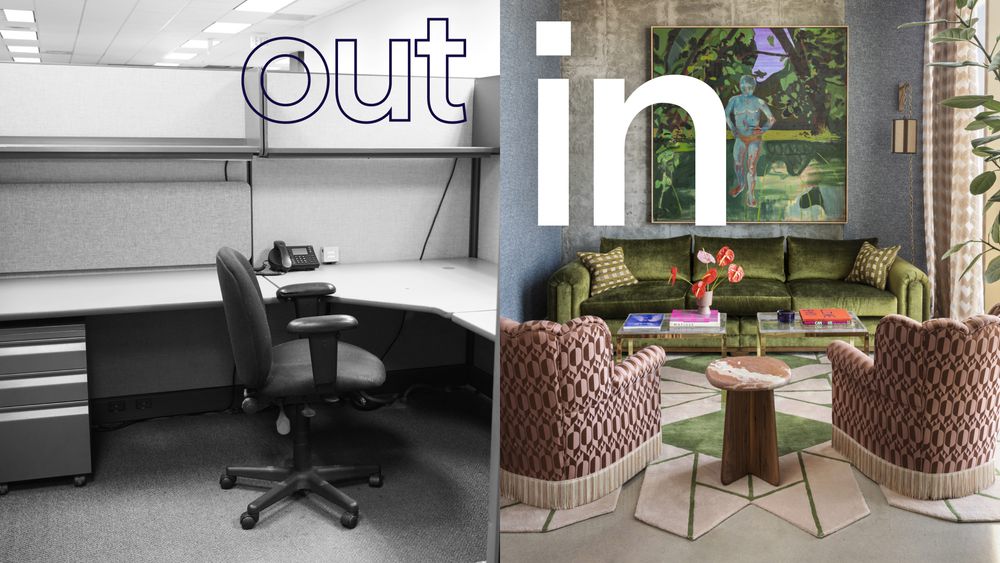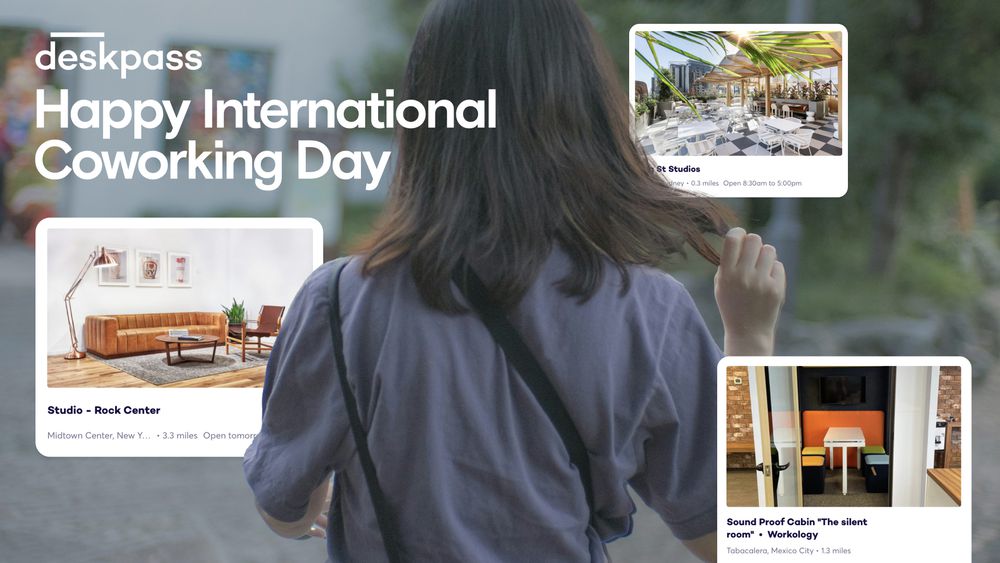Let’s rewind to 2019.
You commute 45 minutes to work before trying to find a decent spot.
After you finally badge into the building, you wait for a cramped elevator while you try to wrap your head around the day. You say hello to your coworker before being roped into an impromptu check-in with your boss…only to have a day full of mandatory meetings ahead. Before you know it, it’s 5 P.M. and you’re wondering where your day went—and why you still have so much to do.
Sound familiar?
For many white-collar workers, this rote routine was a standard workday. Luckily, work has evolved, and we’ve entered the hybrid workspace era.
In 2025, you’ve got Slack huddles instead of those meetings, and deep work happens from wherever you actually feel focused. People no longer come into the physical office just to be seen—they come in for connection, collaboration, and intention. So, here’s the question: If work has evolved, why hasn’t your office?
The Problem with a 2019 Office in a 2025 World
Most office space today is still optimized for a version of work that doesn’t exist anymore. With rows of identical desks and large blocks of underutilized real estate, these spaces are made for presence—not performance.
This kind of setup wastes space and drains energy.
If you're asking people to commute in for the same tasks they can complete better at home, you're not offering them an office. You're offering friction. It sends the wrong message to your team—especially Millennials and Gen Z, who make up more than half the workforce and expect modernity as a baseline, not a perk.
Empty Desks Are Expensive
What do the numbers say about office space? According to CBRE, 80% of companies are maintaining hybrid work policies—but many are still leasing or owning space designed for daily, full-capacity attendance. That’s a massive mismatch. One that’s costing companies millions in unused square footage, maintenance, utilities, and lost engagement.
The traditional cost-per-seat model assumes people will show up every day. But hybrid employees aren’t doing that. They're coming in when it makes sense.
And if your office doesn't make sense, they won't come in at all.
Now, in-office days feel arbitrary, not energizing. When attendance becomes performative, your people start looking for jobs that don’t treat Thursday like a test of loyalty.
What the Modern Office Needs to Do
So, what should the office actually be in 2025? It needs to be a destination, rather than an obligation. It should be a place people choose, not because they have to, but because it helps them do their best work. Here’s what that looks like:
Support both focus and collaboration. Give people spaces where they can actually get things done. Quiet zones. Acoustic pods. Libraries. And then balance it with vibrant, flexible spaces for co-creation—whiteboards, standing tables, and a playlist that doesn’t scream “elevator.”
Offer autonomy and variety. Some days you need deep work. Other days, brainstorming can help you unlock some new ideas. The modern office has zones, not rows. And people choose their zone based on their task, not their title.
Be worth the commute. If someone spends 90 minutes getting to the office, they shouldn’t arrive to sad snacks and the same Zoom call they could’ve taken at home. Today’s best offices are hospitality-inspired. Think coffee bars, natural light, bookable quiet rooms, ergonomic seating, and—yes—places to connect like actual humans.
Put simply, if you want people to show up, you need to show them it’s better than where they already are.
How to Start the Shift
Not sure where to begin? Start by questioning your assumptions. You don’t need to blow up your floorplan overnight. But you do need to get real about how your space is—or isn’t—serving your team. Here’s how to start:
1. Run a Workplace Audit
Track how your current space is actually used, not how it was intended to be used. Which desks sit empty most of the week? Which rooms are overbooked or underutilized? Where does real collaboration happen, and where do people go to focus? Use badge data, survey feedback, and space utilization analytics to build a complete, behavior-based picture.
2. Reallocate Based on Behavior
Once you’ve got the data, let it guide your redesign. Too many private offices? Convert some into flexible team lounges or touchdown zones. Underused meeting rooms? Turn one into a wellness space, quiet pod, or library-like deep work area. Every square foot should serve a purpose—and that purpose should reflect how your team actually works today.
3. Introduce Flex Workspace Access
You don’t need to expand your physical footprint, you need to extend your options. Platforms like Deskpass give your team access to coworking spaces, private offices, and meeting rooms in hundreds of cities. It’s ideal for satellite teams, traveling employees, or just offloading peak-day demand without adding new leases.
4. Redefine What "Showing Up" Means
Set clear expectations for why people come into the office. Is it for collaboration? Focus? Social connection? Don’t mandate days—design for purpose. Help your team make intentional choices based on the kind of work they’re doing, not outdated attendance policies.
5. Build a Feedback Loop
Your workplace strategy should be an ongoing process. Create regular opportunities for employees to share what’s working and what isn’t. Ask what kinds of spaces they need more of. Track usage patterns and adjust to stay agile. The best workplace experience is one that evolves in step with your team’s needs.
Outdated Offices Cost More Than Rent
Let’s be clear: holding onto a 2019-style office isn’t just a design problem. It’s a business problem. The real cost of staying stuck in the past is expensive:
Lost engagement. When employees walk into a space that doesn’t support how they actually work, they disengage—quietly. They multitask more, collaborate less, and start viewing the office as a drain, not a driver. Over time, this compounds into cultural erosion.
Higher attrition. Top performers have options. If your workspace feels rigid, outdated, or out of touch, the best people will eventually leave for companies that get it. Often, they won’t say it was the office. But the friction adds up.
Brand damage. The physical workplace is part of your employer brand. If your office still screams “command and control,” it undermines every message about innovation, trust, and employee empowerment. Candidates notice, and so do clients.
Wasted spend. Paying premium dollars for space that sits empty three days a week? That’s not operational excellence—it’s expensive inertia. Especially when flexible, pay-as-you-use options exist to help you scale smarter.
And let’s not forget the invisible costs: the friction of booking meeting rooms that don’t exist, the burnout from long commutes for uninspiring experiences, the sense of “why am I here?” that quietly drains morale.
Meanwhile, forward-thinking companies are doing the opposite. They’re adapting their space strategy to the actual rhythms of modern work. They’re giving teams options: a vibrant office hub, access to flex spaces, and the autonomy to choose what fits their flow. The payoff comes in many forms: sharper focus, better collaboration, lower real estate costs—just to name a few. Offices can become assets instead of anchors.
The Future of Work Is Already Here. Start Leveraging It.
The solution isn’t more real estate. It’s better real estate, when and where you need it. Stop measuring your office by square feet and start measuring it by impact. If people leave your office more energized, more aligned, and more connected—you’re doing it right. If not, it might be time to leave the past behind.
Explore Deskpass and build a space strategy that matches the way your team actually works. Sign up today.


